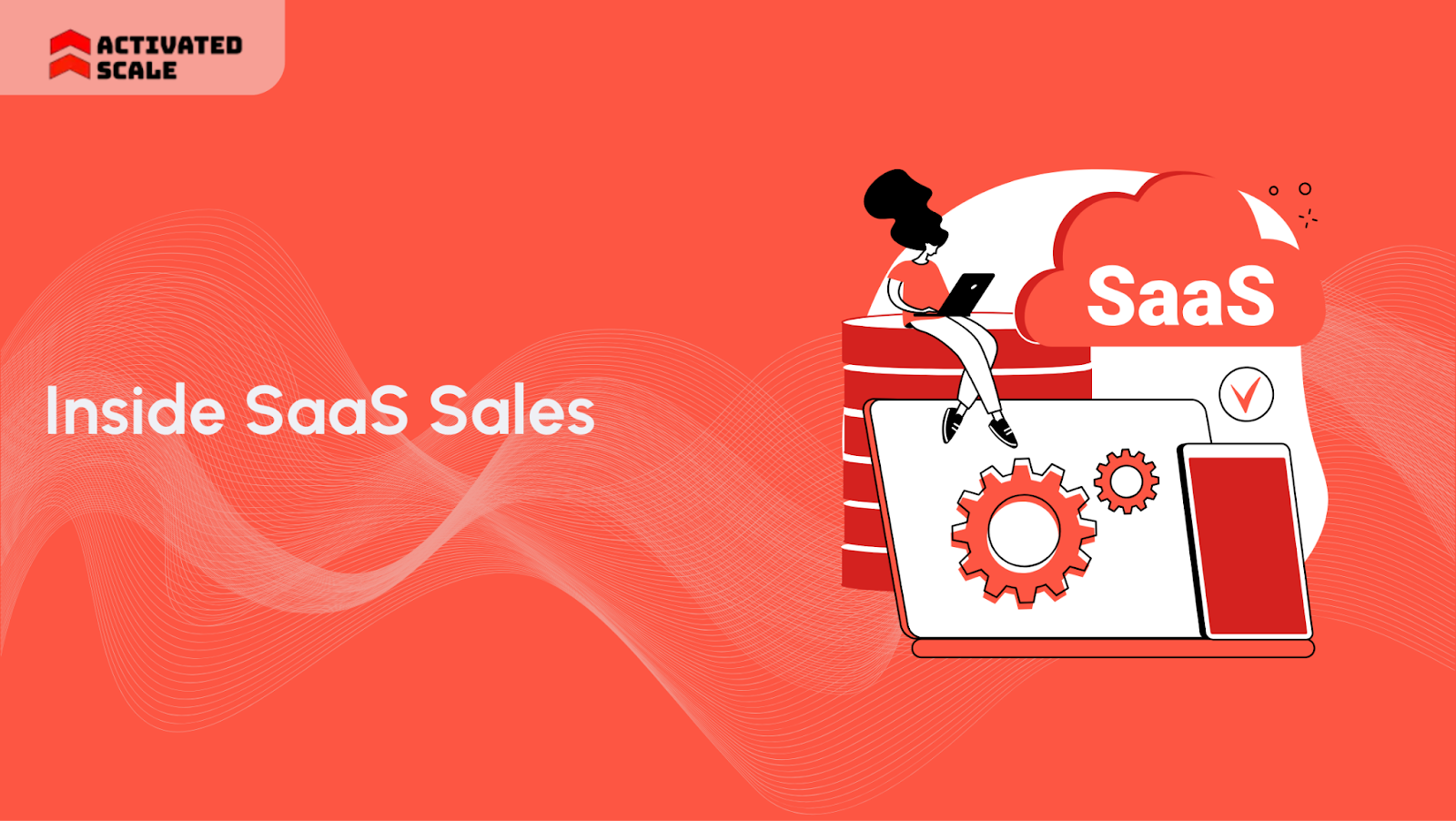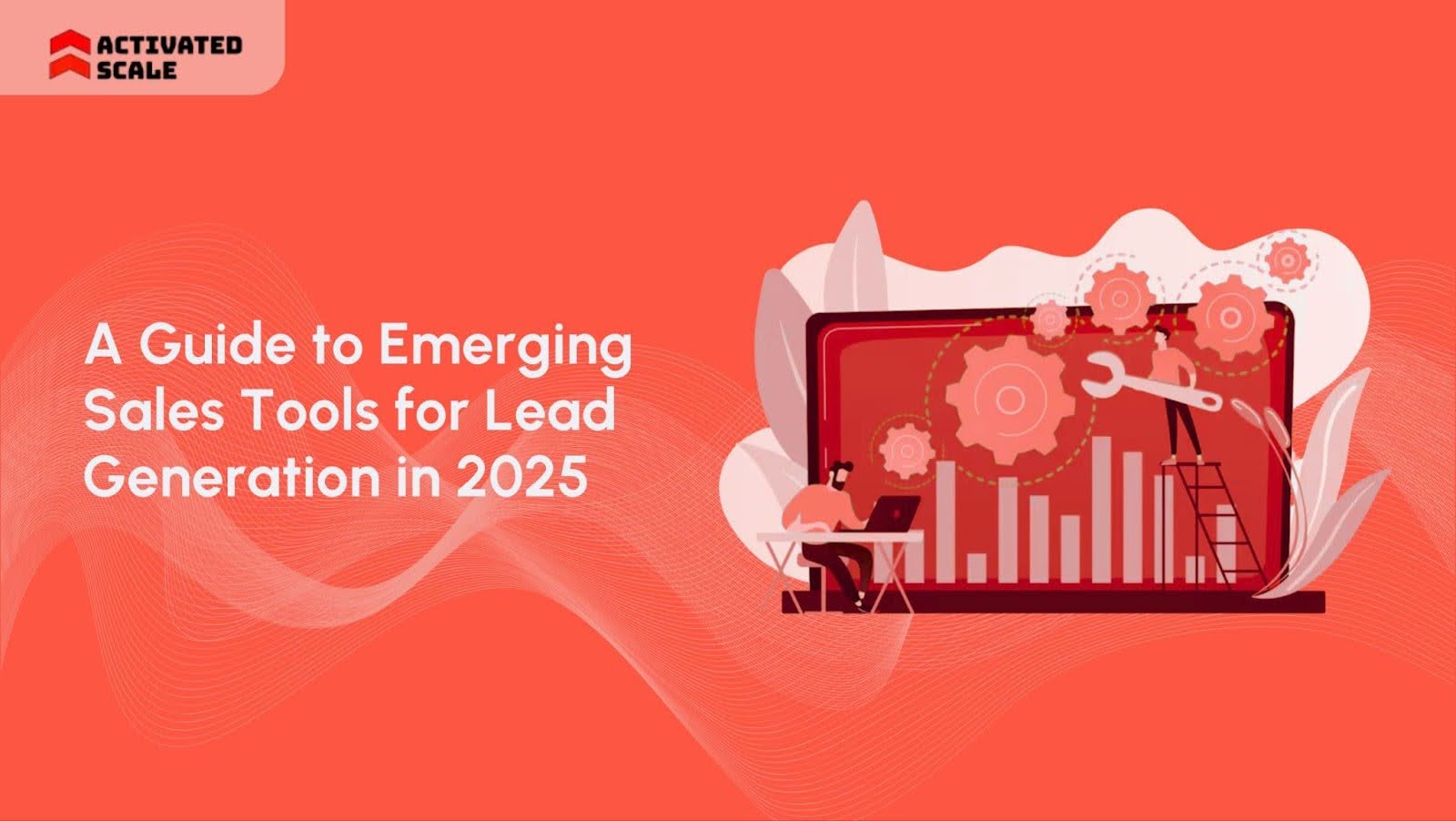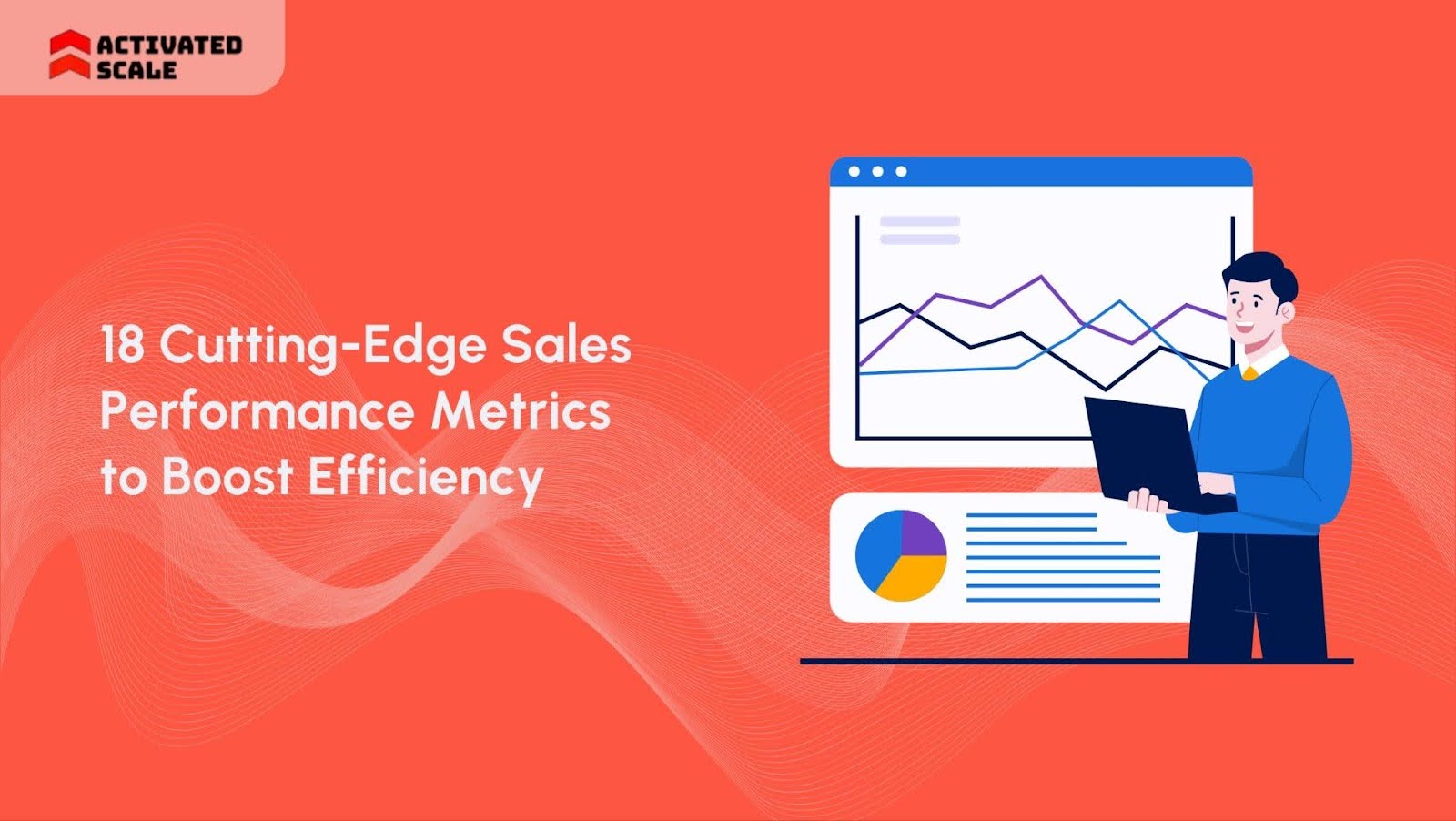Imagine driving a car without a dashboard—no speedometer, no fuel gauge, nothing to tell you how fast you're going or when you’ll run out of gas. Sounds risky, right? That’s exactly what running a business without sales forecasting is like.
In 2025, guesswork is no longer an option. The sales landscape is shifting faster than ever, and businesses that rely on outdated forecasting methods are bound to fall behind. Whether you're a startup or a Fortune 500 company, predicting revenue accurately is crucial for decision-making, budgeting, and staying competitive.
Why Sales Forecasting Matters Now More Than Ever
Sales forecasting is more than just crunching numbers—it’s about understanding market trends, customer behavior, and potential roadblocks before they hit. A solid sales forecast helps businesses:
- Make data-driven decisions instead of relying on gut feelings.
- Align marketing and sales efforts to focus on high-converting leads.
- Optimize inventory and resource allocation to prevent overstocking or shortages.
- Identify risks and opportunities ahead of time to stay ahead of competitors.
How to Choose the Best Sales Forecasting Tool
With so many options available, picking the right sales forecasting tool can feel like finding a needle in a haystack. But don’t worry—we’ve got you covered! Here are the key factors to consider before making your choice:
1. Accuracy & Predictive Power
The whole point of a forecasting tool is to improve accuracy. Look for software that leverages AI, machine learning, and real-time data analysis to minimize guesswork.
2. Integration with Your Tech Stack
A great tool should seamlessly integrate with your CRM (Salesforce, HubSpot, etc.), accounting software, and other business tools. The fewer manual updates, the better!
3. Ease of Use & Customization
A forecasting tool should work for you, not the other way around. Prioritize platforms with intuitive dashboards, easy setup, and customizable reports to match your business needs.
4. Scalability & Pricing
Whether you’re a startup or an enterprise, choose a tool that can scale as your business grows. Also, watch out for hidden costs—some tools charge extra for essential features.
5. AI & Automation Capabilities
The best tools don’t just predict—they automate tedious tasks like data entry and trend analysis. AI-powered insights can give you a competitive edge without requiring a data science degree.
Got your checklist ready? Now, let’s dive into the top 10 sales forecasting tools that can take your revenue predictions to the next level!
Also Read: Understanding the Process and Methods of Sales Forecasting
Top 10 Sales Forecasting Tools in 2025
1. Forecastio
Forecastio is a leading sales forecasting and analytics software designed to provide highly accurate forecasts through multiple forecasting methods. It utilizes advanced AI and machine learning algorithms to analyze historical data and predict future sales with precision.
Key Features:
- Multi-Method Forecasting: Allows users to choose from different forecasting methods depending on their data and business needs.
- AI and Machine Learning: Enhances forecast accuracy by identifying patterns and trends in large datasets.
- Real-Time Analytics: Provides up-to-date insights and dynamic reporting to aid timely decision-making.
Pros:
- Accurate forecasts tailored to your business model.
- Automates the forecasting process, saving time and reducing manual errors.
- Scales with your business, handling increasing amounts of data and users.
Cons:
- May require a learning curve for users new to AI-driven tools.
- Pricing may be on the higher side for small businesses.
Pricing: Starts from $149/month.
Best For: Businesses seeking a comprehensive, AI-driven forecasting solution with flexibility in forecasting methods.
2. Weflow
Weflow combines workflow automation with powerful forecasting tools to streamline sales processes and improve forecast accuracy. It is designed to enhance efficiency and productivity for sales teams that use Salesforce CRM.
Key Features:
- Workflow Automation: Automates routine sales tasks to save time and reduce errors.
- Real-Time Data Sync: Ensures that all sales data is up-to-date across platforms.
- Customizable Dashboards: Allows users to tailor their dashboards to focus on key metrics.
Pros:
- Enhances productivity by automating repetitive tasks.
- Provides a clear and customizable view of sales pipelines.
- Seamlessly integrates with Salesforce CRM.
Cons:
- Primarily designed for Salesforce users; limited functionality for those using other CRMs.
- Some users may find the customization options overwhelming initially.
Pricing: Starts at $20 per user/month.
Best For: Sales teams using Salesforce CRM looking to enhance productivity and forecasting accuracy through automation.
3. Pipedrive
Pipedrive is a sales CRM and pipeline management tool that includes revenue forecasting features. It helps sales teams manage leads and deals, track communications, and automate repetitive tasks.
Key Features:
- Revenue Forecasting: Provides insights into future sales based on current pipeline data.
- AI Sales Assistant: Offers personalized tips and alerts to help improve sales performance.
- Customizable Pipelines: Allows users to tailor sales pipelines to their specific processes.
Pros:
- User-friendly interface that's easy to navigate.
- Affordable pricing plans suitable for small to medium-sized businesses.
- Robust mobile app for sales management on the go.
Cons:
- Limited advanced features compared to some competitors.
- Customization options may be limited for complex sales processes.
Pricing: Plans start at $12.50 per user/month.
Best For: Small to medium-sized businesses seeking an intuitive CRM with basic forecasting capabilities.
4. Zoho CRM
Zoho CRM is a comprehensive customer relationship management platform that offers AI-powered sales forecasting. It helps businesses manage their sales, marketing, and customer support in a single system.
Key Features:
- AI Assistant (Zia): Provides sales predictions and alerts based on data analysis.
- Sales Pipeline Management: Visualizes the sales pipeline and tracks deal progress.
- Custom Reports and Dashboards: Offers in-depth analytics and reporting capabilities.
Pros:
- Highly customizable to fit various business needs.
- Integrates with a wide range of third-party applications.
- Affordable pricing with a free tier available.
Cons:
- The user interface can be overwhelming for new users.
- Some advanced features may require a steeper learning curve.
Pricing: Free plan available; paid plans start at $14 per user/month.
Best For: Businesses of all sizes looking for a customizable CRM with integrated sales forecasting.
5. Salesforce Sales Cloud
Overview: Salesforce Sales Cloud is a comprehensive sales platform that offers robust forecasting capabilities. It provides real-time insights into your sales pipeline, helping businesses predict future sales and make informed decisions.
Key Features:
- Customizable Forecasting: Tailor forecasts to your specific business needs, allowing for adjustments based on various parameters.
- Collaborative Forecasting: Enables team collaboration to improve forecast accuracy and accountability.
- Pipeline Management: Offers a visual representation of your sales pipeline, making it easier to track deals and identify bottlenecks.
Pros:
- Highly customizable to fit various business models.
- Strong integration capabilities with other Salesforce products and third-party applications.
- Robust reporting and analytics tools.
Cons:
- Can be complex to set up and configure for new users.
- Pricing may be prohibitive for small businesses.
Pricing: Plans start at $25 per user/month.
Best For: Medium to large enterprises seeking a scalable and customizable sales forecasting solution.
6. Clari
Overview: Clari is a revenue operations platform that provides AI-driven sales forecasting and analytics. It helps businesses predict revenue outcomes and identify potential risks in the sales pipeline.
Key Features:
- Predictive Analytics: Utilizes AI to forecast sales outcomes and provide actionable insights.
- Pipeline Inspection: Offers detailed views of the sales pipeline to identify at-risk deals and opportunities.
- Revenue Intelligence: Provides a comprehensive view of revenue metrics to inform strategic decisions.
Pros:
- Enhances forecast accuracy with AI-driven insights.
- Improves sales team accountability through transparent pipeline visibility.
- Integrates with major CRM systems for seamless data flow.
Cons:
- May require a learning curve for teams new to AI-driven tools.
- Pricing information is not publicly available; interested users need to contact Clari for a quote.
Best For: Businesses aiming to leverage AI for more accurate sales forecasting and revenue optimization.
7. Anaplan
Anaplan is a cloud-based planning platform that offers advanced sales forecasting capabilities. It enables businesses to model various sales scenarios and align their forecasts with overall business objectives.
Key Features:
- Scenario Planning: Allows users to create and compare multiple sales scenarios to assess potential outcomes.
- Integrated Business Planning: Aligns sales forecasts with other business functions like finance and operations.
- Real-Time Data Updates: Ensures that forecasts are based on the most current data available.
Pros:
- Facilitates cross-departmental collaboration for unified planning.
- Highly customizable to fit complex business needs.
- Scalable for large enterprises with extensive forecasting requirements.
Cons:
- May be overkill for small businesses with simpler forecasting needs.
- Implementation can be time-consuming and may require specialized expertise.
Pricing: Available upon request; typically tailored to enterprise requirements.
Best For: Large enterprises seeking a comprehensive and integrated approach to sales forecasting and business planning.
8. MeetRecord
MeetRecord is a revenue intelligence and sales coaching software that offers AI-driven sales forecasting. It analyzes sales interactions to provide insights into deal health and pipeline status.
Key Features:
- AI-Driven Analysis: Evaluates sales conversations to predict deal outcomes and forecast revenue.
- Deal Risk Identification: Highlights potential risks in the sales pipeline, allowing for proactive management.
- Sales Coaching: Provides actionable insights to improve sales team performance.
Pros:
- Enhances forecast accuracy by analyzing real sales interactions.
- Offers valuable coaching insights to boost sales effectiveness.
- Integrates with popular CRM systems for streamlined data management.
Cons:
- May not offer as many advanced forecasting features as some competitors.
- Primarily focused on sales coaching, which may not be a priority for all businesses.
Pricing: Plans start at $39 per user/month.
Best For: Sales teams looking to combine forecasting with performance improvement through coaching insights.
9. HubSpot Sales Hub
HubSpot Sales Hub is an all-in-one sales CRM and forecasting tool designed to help businesses track deals, automate follow-ups, and predict revenue. With its intuitive interface and seamless integration with HubSpot’s marketing and customer service tools, it’s a great choice for businesses looking for a unified sales ecosystem.
Key Features:
- Pipeline Management: Offers a clear, visual representation of the sales pipeline.
- AI-Powered Forecasting: Uses historical data and trends to generate revenue predictions.
- Sales Automation: Automates follow-ups and deal tracking to keep teams organized.
- CRM Integration: Syncs seamlessly with HubSpot’s marketing and customer service tools for a holistic approach.
Pros:
- Easy-to-use interface, ideal for small and mid-sized businesses.
- Strong automation capabilities reduce manual tasks.
- Fully integrates with HubSpot’s ecosystem, making it a great choice for businesses using other HubSpot tools.
Cons:
- Advanced forecasting features are locked behind higher-tier plans.
- Limited customizability compared to tools like Salesforce.
Pricing: Free version available, Paid plans start at $45/month (Starter).
Advanced forecasting features available in higher-tier plans.
Best For:
- Small to mid-sized businesses looking for an easy-to-use CRM with built-in forecasting.
- Companies already using HubSpot for marketing and customer service.
10. Zendesk Sell
Zendesk Sell is a sales automation and forecasting platform that helps sales teams manage leads, track deals, and forecast revenue with ease. It’s built for businesses that want a simple yet effective forecasting tool without the complexity of enterprise-level CRMs.
Key Features:
- AI-Driven Forecasting: Uses machine learning to generate real-time sales predictions.
- Pipeline Management: Provides a clear, visual dashboard for tracking deal progress.
- Sales Automation: Reduces manual tasks with automated workflows and follow-ups.
- Mobile CRM: Allows sales teams to manage leads and deals on the go.
Pros:
- Intuitive interface, easy to set up and use.
- Strong automation features for sales pipeline efficiency.
- Integrates seamlessly with Zendesk’s customer support tools.
- Affordable pricing, making it accessible for small businesses.
Cons:
- Limited customizability compared to tools like Salesforce or HubSpot.
- Not as feature-rich for enterprises needing deep analytics and forecasting.
Pricing: Plans start at $19 per user/month, Higher-tier plans include more advanced forecasting features.
Best For:
- Small to mid-sized businesses that need an easy-to-use sales forecasting tool.
- Sales teams already using Zendesk for customer support.
Also Read: How to Implement Predictive Sales Analytics for Forecasting
Conclusion
Sales forecasting isn't just a numbers game—it’s the secret weapon that helps businesses stay ahead of market trends, make smarter decisions, and drive revenue growth. In 2025, relying on outdated spreadsheets or guesswork is no longer an option. With the rise of AI-driven forecasting tools, businesses of all sizes now have access to accurate, real-time insights that can shape their sales strategy for the better.
But even the best forecasting software is only as good as the sales team using it. If you’re struggling to build a high-performing sales team or need expert leadership to drive revenue, Activated Scale can help. Their contract-to-hire sales recruiting, fractional selling, and fractional sales leadership services connect you with top-tier sales talent, ensuring you have the right people in place to maximize your forecasting tools.
Ready to transform your sales team and forecasting strategy? Book a demo call with Activated Scale today and take the first step toward scaling smarter, closing more deals, and boosting your revenue in 2025!
The Ultimate Guide to Hiring a Salesperson!
Get the step-by-step guide to hiring, onboarding, and ensuring success!
_edi.png)




